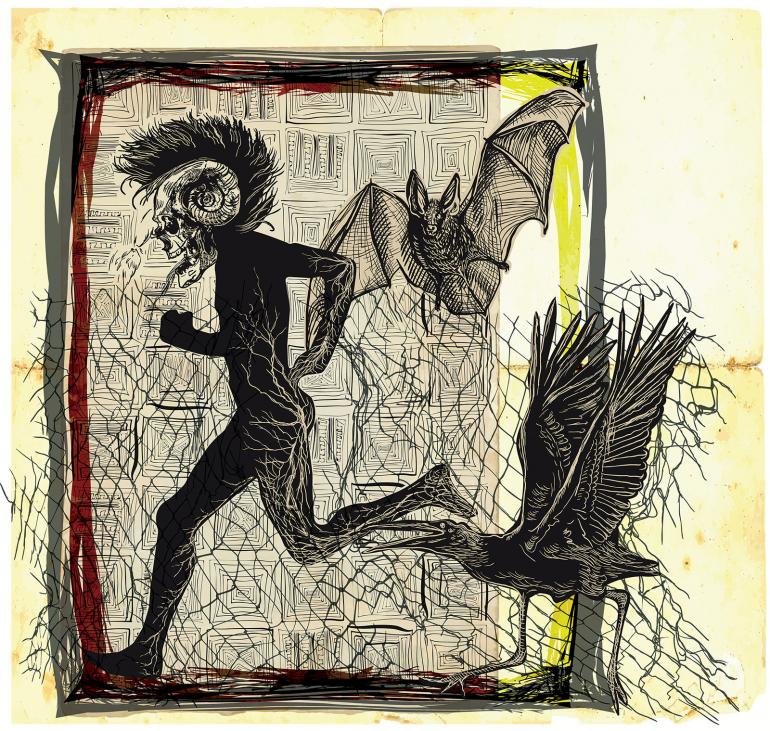Visceral Voodoo
Treating chronic pain from the inside out.
Ahh, springtime in Montana—so many things to do. Along with hiking, biking, fishing, and rafting, many of us will be dusting off the bunnies on some chronic aches and pains inherited from winter. Low back? Check. Shoulder? Check. Hip, knee, elbow, neck? Checks all across the board, plus all those other aches and pains we haven’t talked about.
There’s one common “pain” that is often ignored, because it’s minor, so it clearly can’t cause problems. Yet how many women out there have had a c-section and have incontinence issues, hip pain, or lower-back pain? How many men have had a hernia repair and worry they’ll burst at the seams with one more deadlift repetition? How many people just haven’t felt the same since their appendectomy? Pick your pain and if you can’t figure out why it’s still there, check your scar. Why is that scar important? Fascia, which connects to viscera, which leads to voodoo. Hold on, I’ll explain.
So, what do you do? Do you go back to your same routine and hope something works differently this time, or do you seek another method of treatment? I’ve been the one who tried the same old routine that didn’t work for a decade after a car accident and years post-c-section (as an occupational therapist, I should know better, right?). I eventually went back to my physical therapist because I was convinced that I wasn’t strong enough. More injections in my spine, because why not? Until they hit the nerve that made me feel like I wet myself—then I was done. Obviously it wasn’t working. Last resort? Surgery (disc replacement 12 years after initial injury, give me some credit!)—it helped some, but the problem was still there.
Often, the area of dysfunction isn’t the same area as the pain, so it requires both direct and indirect manipulation of specific tissue structure.
Given the above, what’s the one area that hasn’t been addressed? Viscera: the organs, fascia, and other connective tissues of your chest and abdomen—everything that sustains you at your core, sliding and moving around one another. And what does that have to do with your pain, whether chronic or not? Way more than you might think. If you had told me when I had my back surgery 10 years ago that I would eventually be treated, and start treating others for visceral problems, I would have called you bonkers.
Then, I experienced it for myself. My practitioner placed her hands on top of my head to feel for a pull in any direction. This, I learned, is what visceral therapists call “listening,” and it requires acute awareness and sensitivity. Identifying problem areas inside the body consists of narrowing down the exact direction that dysfunctional tissue is being pulled; i.e., listening with the hands. Once this area is pinpointed, gentle massage techniques are used to correct the tissue’s movements.
Now, I am able to move more freely and my pain has lessened. The simple act of addressing the connective tissue dysfunctions in my body allowed for changed and better movement patterns. Things I hadn’t been able to do in almost two decades I found to be options again: hiking, pilates, and rafting (on the oars!) were now both possible and enjoyable. Voodoo. Black Magic. How else can you explain such a significant change with such a small shift in the system? Definitely voodoo.
What did I decide to do with these realizations? Start treating others! I utilize a variety of different methods to treat pain depending on what a patient’s body tells me. Often, the area of dysfunction isn’t the same area as the pain, so it requires both direct and indirect manipulation of specific tissue structure. This can be combined with traditional PT and OT techniques, cupping, dry-needling, and apparatus pilates and yoga.
Do these methods fix everything? Of course not. You can’t always “fix” chronic pain. What you need is to find is someone, ideally a team, who will help your system learn how to work the way it’s supposed to, with ease and without restrictions. I still have chronic pain; I likely will forever, but it doesn’t consume me the way it once did. While visceral manipulation is clearly not the only reason I have less severe pain, it has been the one tool that consistently brings my body back closer to “normal,” enabling me to pursue flexibility and strengthening with my PT and, most importantly, allowing me to focus on springtime activities.
Kezia Peterson, MOTR/L, is an owner of Root Therapy & Wellness where her team helps people with chronic pain, hypermobility, athletic performance, and recovering from surgeries.











